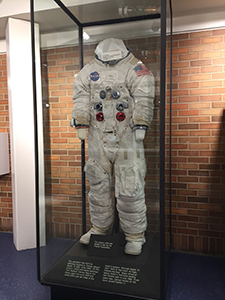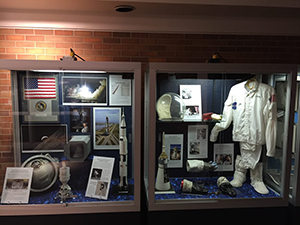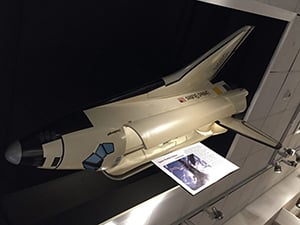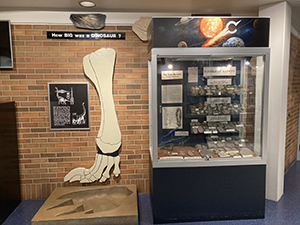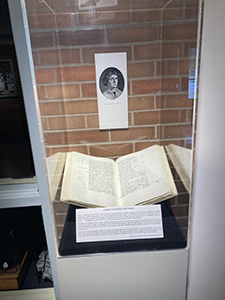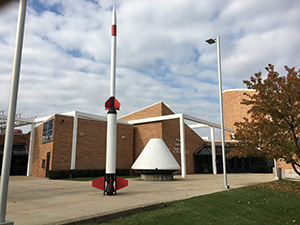About the Cernan Earth and Space Center
Brief History
Significant Dates
Cernan Earth & Space Center Exhibits
The Cernan Earth and Space Center has a number of Earth and space exhibits in its main lobby, as follows:
Links
Please click any of the following links to further explore the exciting world of astronomy, space exploration, earth science and weather.
Earth Science Links
Astronomy & Space Science Links
Captain Eugene Cernan Tribute

The Cernan Earth and Space Center was named for astronaut Eugene A. Cernan (CAPT, USN, Retired) who was born on March 14, 1934, and raised in suburban Bellwood, not far from the Triton College campus where the Cernan Earth and Space Center is located.
Before becoming an astronaut, Gene Cernan was an American naval officer, naval aviator, electrical engineer, aeronautical engineer and fighter pilot. He flew aboard the Gemini 9, Apollo 10 and Apollo 17 missions. In December 1972, Captain Cernan was the last astronaut to leave his footprints on the lunar surface.
The entire Triton College community is saddened by the passing of Capt. Eugene Cernan, the last man to set foot on the moon and namesake of Triton’s Cernan Earth and Space Center. He is a true American hero and forever a friend of Triton. Former Cernan Center Director Bart Benjamin shared his memories of Captain Cernan with WGN News, CBS Chicago, NBC Chicago and ABC Chicago. Click the links below to learn more about the life and legacy of Capt. Cernan.
Links:
- http://wgntv.com/2017/01/16/nasa-astronaut-gene-cernan-has-died/
- http://www.nbcchicago.com/on-air/as-seen-on/gene-cernan-dead-410889625.html
- http://abc7chicago.com/news/gene-cernan-last-astronaut-to-walk-on-the-moon-dies-at-82/1705215/
- http://chicago.cbslocal.com/2017/01/16/chicago-native-gene-cernan-last-man-to-walk-on-the-moon-dies-at-82/
Click here to watch a video of the funeral services for Gene Cernan, held Jan. 24, 2017 in Houston, TX.

